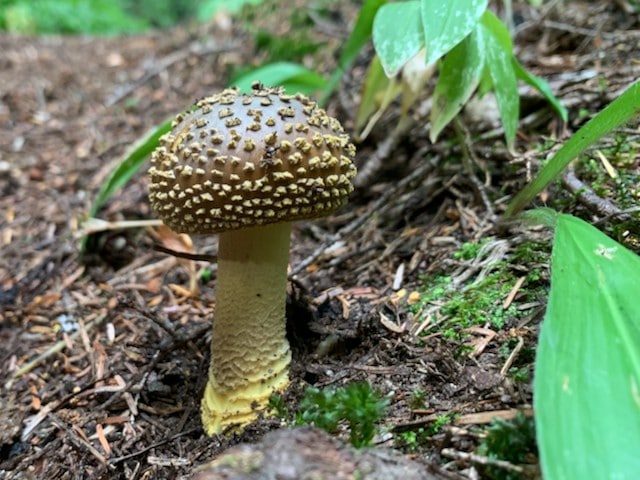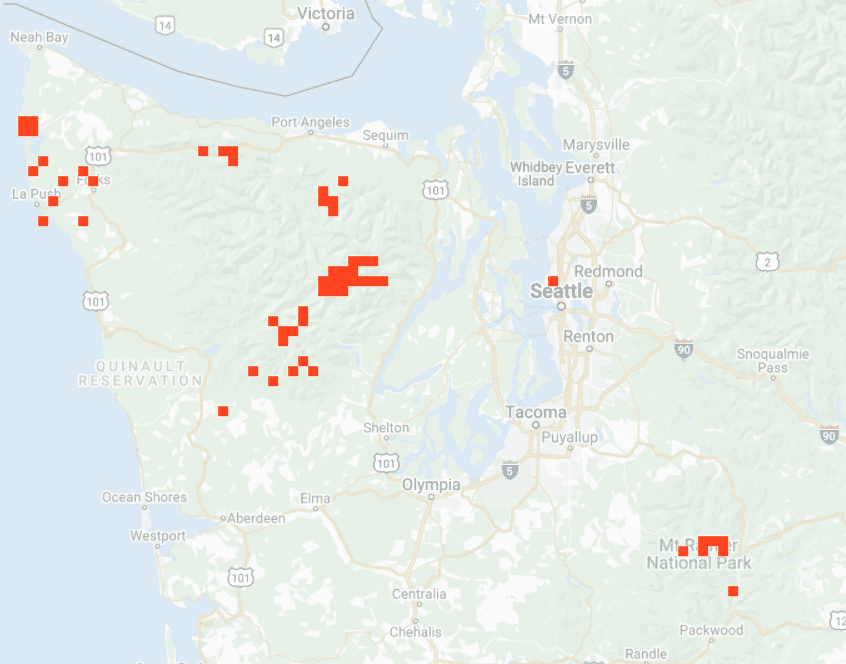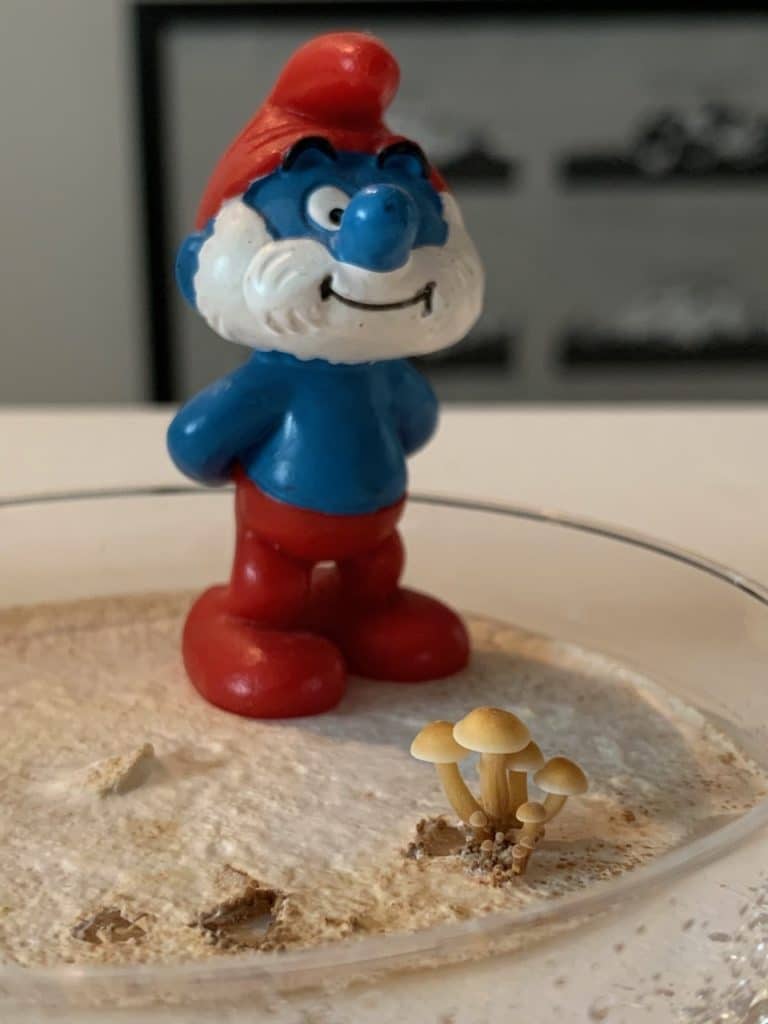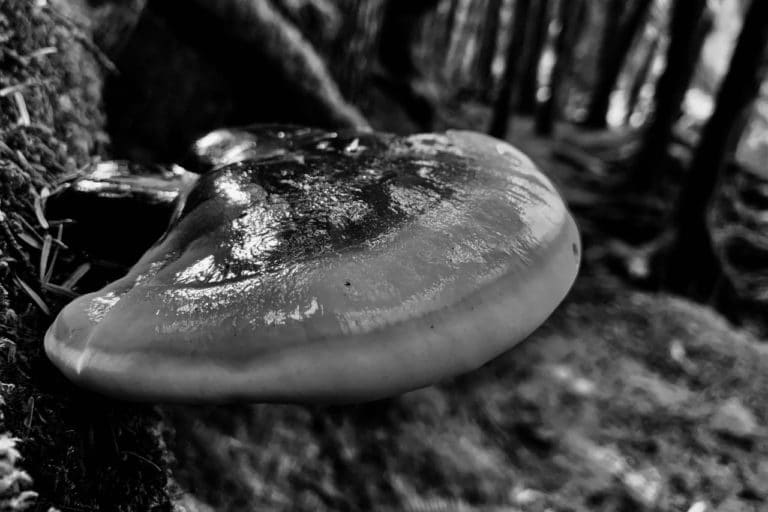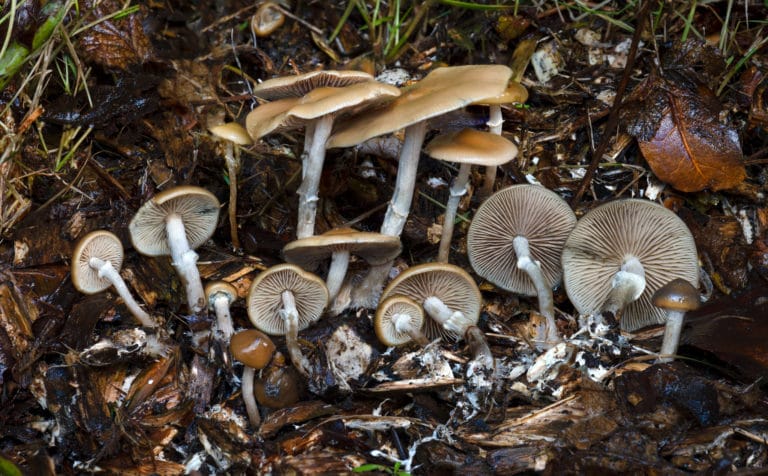Late Summer Recap
[et_pb_section fb_built=”1″ _builder_version=”4.9.0″ _module_preset=”default”][et_pb_row _builder_version=”4.9.0″ _module_preset=”default”][et_pb_column type=”4_4″ _builder_version=”4.9.0″ _module_preset=”default”][et_pb_text _builder_version=”4.9.0″ _module_preset=”default”]
Here is a brief summary of the my summer mushrooming. You can see additional photos and locations here on iNaturalist.
[/et_pb_text][et_pb_text _builder_version=”4.9.0″ _module_preset=”default”]
Summer Wrap Up
On average, the Seattle area will receive about 2in of rain over the summer. This year, the region received just 10% of that.
The key to finding mushrooms in the summer is to find the moisture and humidity. My strategy this year was to spend time in river valleys.
Specifically I explored:
- The White River on east Rainier
- The Duckabush and Dosewallips rivers in the eastern Olympics
- Barnes Creek in the northern Olympics
- The Ozette area in the NW corner of the Olympic Peninsula
- Lake Wynoochee in the southeast corner of the Olympics
[/et_pb_text][et_pb_text _builder_version=”4.9.0″ _module_preset=”default”]
Here is some of what I found
The key edible mushrooms
[/et_pb_text][/et_pb_column][/et_pb_row][et_pb_row make_equal=”on” admin_label=”Edibles” _builder_version=”4.9.0″ _module_preset=”default”][et_pb_column type=”4_4″ _builder_version=”4.9.0″ _module_preset=”default”][et_pb_text _builder_version=”4.9.0″ _module_preset=”default”]
These photos are not adequate for identifying a mushroom you intend to eat. Consult multiple sources and gain hands-on experience with a mushroom before eating foraged mushrooms.
[/et_pb_text][et_pb_text admin_label=”Hedgehog” _builder_version=”4.9.0″ _module_preset=”default”]
Hedgehogs
[/et_pb_text][et_pb_image src=”https://salishmushrooms.com/wp-content/uploads/2021/09/Hydnum.jpg” title_text=”Hydnum” _builder_version=”4.9.0″ _module_preset=”default”][/et_pb_image][et_pb_text _builder_version=”4.9.0″ _module_preset=”default” custom_margin=”13px||||false|false”]
Notice the teeth or spines on the underside of the cap which also continue down the stem. This particular group of hedgehogs is closely related to chanterelles and from above look identical to them. Another similar-looking hedgehog also has a smooth, tan cap however the teeth are only found on the underside of the cap and do not continue down the stem.
[/et_pb_text][et_pb_text admin_label=”Chanterelle” _builder_version=”4.9.0″ _module_preset=”default”]
Chanterelles
[/et_pb_text][et_pb_gallery gallery_ids=”10573,10570,10577″ fullwidth=”on” _builder_version=”4.9.0″ _module_preset=”default” pagination_text_color=”#FFFFFF”][/et_pb_gallery][et_pb_text _builder_version=”4.9.0″ _module_preset=”default”]
I didn’t see my first chanterelles of the year until mid-August near Lake Crescent. Often in dry summer months small pins will appear and either grow slowly or abort. Key characteristics for identifying chanterelles are:
- Smooth cap. Not scaly
- Growing in soil, not wood
- Stem is dense tissue, not hollow
- Smooth rounded gills that are veiny
- Not thin, blade-like gills
[/et_pb_text][et_pb_text admin_label=”Bolete” _builder_version=”4.9.0″ _module_preset=”default”]
King Bolete
[/et_pb_text][et_pb_image src=”https://salishmushrooms.com/wp-content/uploads/2021/09/boletus-edulis-1024×1024.jpg” title_text=”IMG_6074″ _builder_version=”4.9.0″ _module_preset=”default”][/et_pb_image][et_pb_text admin_label=”Chicken” _builder_version=”4.9.0″ _module_preset=”default”]
Chicken of the woods
(Laetiporus)
[/et_pb_text][et_pb_image src=”https://salishmushrooms.com/wp-content/uploads/2021/09/IMG_6942.jpg” title_text=”IMG_6942″ _builder_version=”4.9.0″ _module_preset=”default”][/et_pb_image][et_pb_text _builder_version=”4.9.0″ _module_preset=”default”]
These are pretty easy to find in Aug/Sept, and easy to tell apart from the closest look-alikes. I find them most often on conifer wood. They can be difficult to digest for some and it is recommended to cook these thoroughly.
[/et_pb_text][et_pb_text admin_label=”Matsutake” _builder_version=”4.9.0″ _module_preset=”default”]
Matsutake
[/et_pb_text][et_pb_image src=”https://salishmushrooms.com/wp-content/uploads/2021/09/tricholoma-murrillianum.jpg” title_text=”IMG_7256 (2)” _builder_version=”4.9.0″ _module_preset=”default”][/et_pb_image][et_pb_text _builder_version=”4.9.0″ _module_preset=”default”]
The great matsutake or pine mushroom. I have a fairly limited experience with this mushroom. It isn’t common in my usual haunts. It can be found on the eastern slopes of the Cascades, volcanic soils, and coastal areas. Smelling the matsutake is one of the best ways to confirm your ID as it has a spicy scent reminiscent of cinnamon candy.
One must be careful eating matsutake. There are poisonous mushrooms that share some similarities however once you learn to recognize the scent and how to avoid poisonous mushrooms in the Amanita genus, one should be able to avoid mistakes.
[/et_pb_text][/et_pb_column][/et_pb_row][et_pb_row make_equal=”on” admin_label=”Interesting” _builder_version=”4.9.0″ _module_preset=”default”][et_pb_column type=”4_4″ _builder_version=”4.9.0″ _module_preset=”default”][et_pb_text admin_label=”Shaggy Mane” _builder_version=”4.9.0″ _module_preset=”default”]
Shaggy Mane
[/et_pb_text][et_pb_image src=”https://salishmushrooms.com/wp-content/uploads/2021/09/IMG_6136-2-1024×1024.jpg” title_text=”IMG_6136 (2)” _builder_version=”4.9.0″ _module_preset=”default”][/et_pb_image][et_pb_text _builder_version=”4.9.0″ _module_preset=”default” custom_margin=”13px||||false|false”]
In my experience I have only seen shaggy manes in urban areas, and along roads in forested areas. I have never seen them along a trail so deep in the mountains. I found this handsome fella a few miles from the Sunrise visitor center on Rainier. The cap texture was a little different than a typical shaggy mane which I attribute to the dry spell.
[/et_pb_text][et_pb_text admin_label=”Rubroboletus pulcherrimus” _builder_version=”4.9.0″ _module_preset=”default”]
Red-pored Bolete
Rubroboletus pulcherrimus
[/et_pb_text][et_pb_image src=”https://salishmushrooms.com/wp-content/uploads/2021/09/rubroboletus-pulcherrimus-1024×768.jpg” title_text=”IMG_7024 (1)” _builder_version=”4.9.0″ _module_preset=”default”][/et_pb_image][et_pb_text _builder_version=”4.9.0″ _module_preset=”default”]
I have only seen this possibly once before though I never took a photo of the underside of that first one. This was the first time I had personally seen red pores on a bolete. This mushroom has been implicated in one death. Don’t eat them, but they are ok to touch.
[/et_pb_text][et_pb_text admin_label=”Amanita pachycolea” _builder_version=”4.9.0″ _module_preset=”default”]
Western Grisette
Amanita pachycolea
[/et_pb_text][et_pb_image src=”https://salishmushrooms.com/wp-content/uploads/2021/09/amanita2.jpg” title_text=”IMG_7059″ _builder_version=”4.9.0″ _module_preset=”default”][/et_pb_image][et_pb_text _builder_version=”4.9.0″ _module_preset=”default”]
I really enjoy finding grisettes. They are in the same genus as the common Amanita muscaria or fly agaric however they sit in a separate wing of that genus. One key identifying characteristic is the sac at the base of the mushroom which is often slightly buried underground. Another is the striations or lines on the edge of the cap that form a little halo around the center of the cap.
[/et_pb_text][et_pb_text admin_label=”Gastroboletus ruber” _builder_version=”4.9.0″ _module_preset=”default”]
Gastroboletus ruber
[/et_pb_text][et_pb_image src=”https://salishmushrooms.com/wp-content/uploads/2021/09/gastroboletus-ruber-768×1024.jpg” title_text=”IMG_6743 (1)” _builder_version=”4.9.0″ _module_preset=”default”][/et_pb_image][et_pb_text _builder_version=”4.9.0″ _module_preset=”default”]
I am still learning the Gastroboletus genus. One common characteristic of them is that they will have bolete-like pores however the cap is oddly-shaped or not-cap-shaped at all. This one has a texture of a scouring pad, and was puffball-shaped. It is not a commonly found mushroom.
[/et_pb_text][et_pb_text _builder_version=”4.9.0″ _module_preset=”default”]
Gastroboletus turbinatus
[/et_pb_text][et_pb_image src=”https://salishmushrooms.com/wp-content/uploads/2021/09/gastroboletus-768×1024.jpg” title_text=”IMG_7191 (1)” _builder_version=”4.9.0″ _module_preset=”default”][/et_pb_image][et_pb_text _builder_version=”4.9.0″ _module_preset=”default”]
This is another Gastroboletus. Having a larger specimen would have made it easier to identify, and cutting it down the middle might have helped to confirm as well. According to Danny Miller’s page on Gastroid Fungi the flesh blues quickly, and the pores will be yellow or red.
[/et_pb_text][et_pb_text admin_label=”Asterophora lycoperdoides” _builder_version=”4.9.0″ _module_preset=”default”]
Asterophora lycoperdoides
[/et_pb_text][et_pb_image src=”https://salishmushrooms.com/wp-content/uploads/2021/09/asterophora-lycoperdoides-1024×768.jpg” title_text=”IMG_7068 (2)” _builder_version=”4.9.0″ _module_preset=”default”][/et_pb_image][et_pb_text _builder_version=”4.9.0″ _module_preset=”default”]
Yes, those are mushrooms growing out of a rotten russula. These little guys are a parasite on russulas and can be recognized by the powdery texture on their caps. The russula can be recognized by the black coloring. There is a group of russulas that turn black as they age which is uncommon for other mushrooms.
[/et_pb_text][/et_pb_column][/et_pb_row][et_pb_row _builder_version=”4.9.0″ _module_preset=”default”][et_pb_column type=”4_4″ _builder_version=”4.9.0″ _module_preset=”default”][et_pb_code admin_label=”Mushroom Videos” _builder_version=”4.9.0″ _module_preset=”default”]
[/et_pb_code][et_pb_code admin_label=”Laetiporus” _builder_version=”4.9.0″ _module_preset=”default”]
[/et_pb_code][/et_pb_column][/et_pb_row][/et_pb_section]

